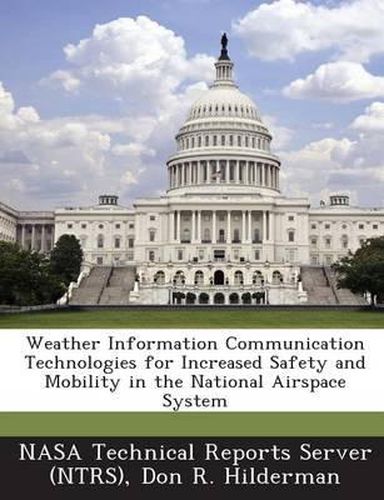Readings Newsletter
Become a Readings Member to make your shopping experience even easier.
Sign in or sign up for free!
You’re not far away from qualifying for FREE standard shipping within Australia
You’ve qualified for FREE standard shipping within Australia
The cart is loading…






The purpose of the NASA Glenn Research Center Weather Information Communications (WINCOMM) project was to develop advanced communications and information technologies to enable the high-quality and timely dissemination of strategic weather information between the flight deck and ground users as well as tactical turbulence hazard information between relevant aircraft and to the ground. This report will document and reference accomplishments on the dissemination of weather information during the en route phase of flight from ground-based weather information providers to the flight deck (ground-to-air), from airborne meteorological sensors to ground users (air-to-ground), and weather turbulence and icing hazard information between relevant aircraft (air-to-air). In addition, references in this report will demonstrate the architecture necessary to implement and perform successful transmission and reception of weather information to the cockpit, show that weather information flow does not impact \“normal\” traffic, demonstrate the feasibility of operational implementation, and lay foundation for future data link development.
$9.00 standard shipping within Australia
FREE standard shipping within Australia for orders over $100.00
Express & International shipping calculated at checkout
The purpose of the NASA Glenn Research Center Weather Information Communications (WINCOMM) project was to develop advanced communications and information technologies to enable the high-quality and timely dissemination of strategic weather information between the flight deck and ground users as well as tactical turbulence hazard information between relevant aircraft and to the ground. This report will document and reference accomplishments on the dissemination of weather information during the en route phase of flight from ground-based weather information providers to the flight deck (ground-to-air), from airborne meteorological sensors to ground users (air-to-ground), and weather turbulence and icing hazard information between relevant aircraft (air-to-air). In addition, references in this report will demonstrate the architecture necessary to implement and perform successful transmission and reception of weather information to the cockpit, show that weather information flow does not impact \“normal\” traffic, demonstrate the feasibility of operational implementation, and lay foundation for future data link development.